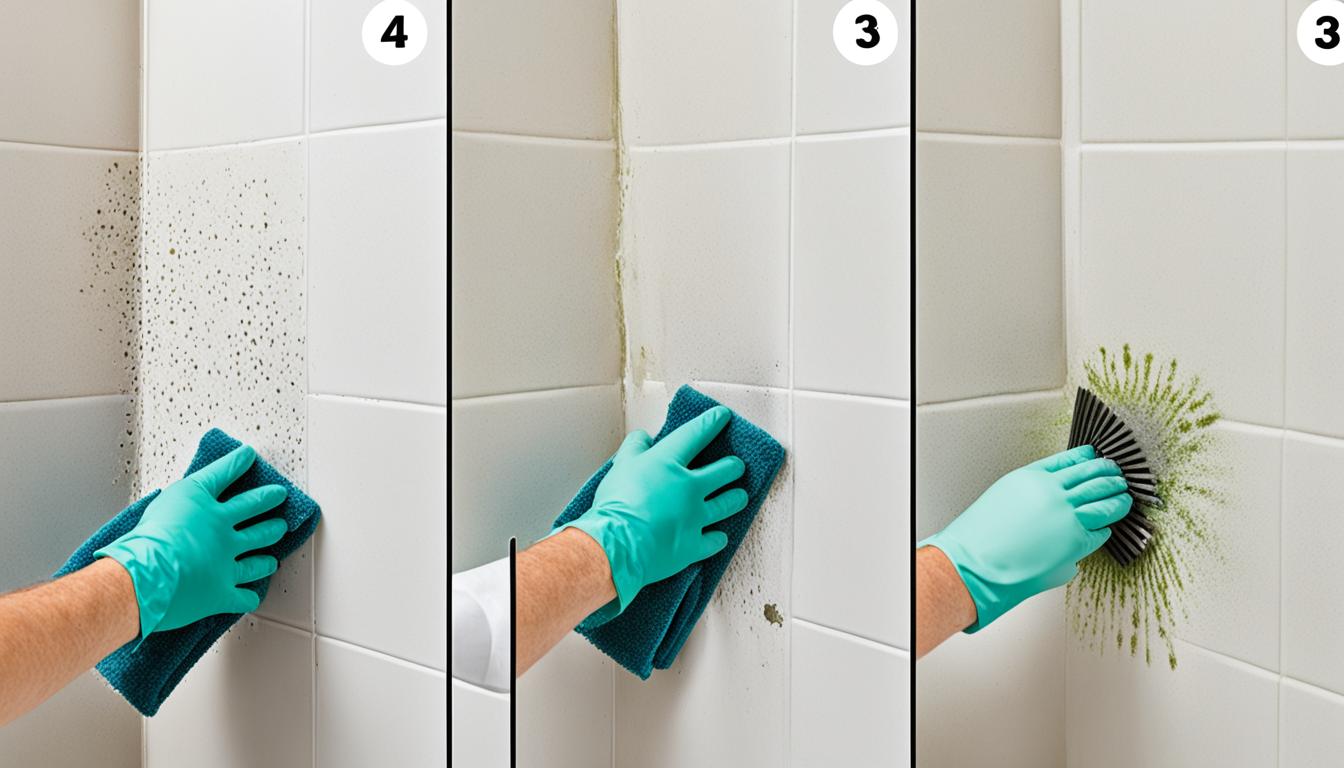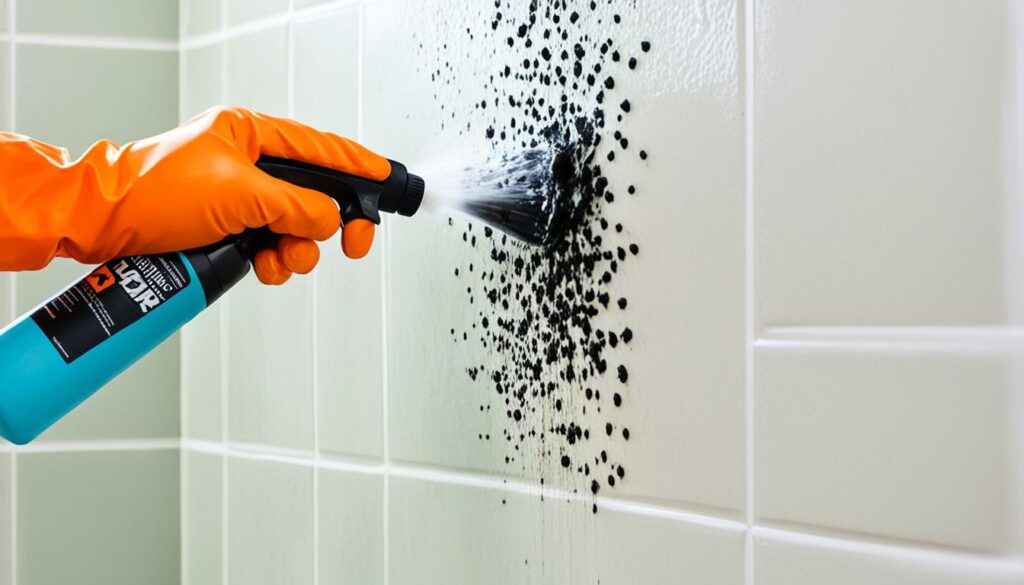
Eliminate Mold: How to Fix a Moldy Shower
Welcome to our comprehensive guide on how to fix a moldy shower. Dealing with mold in your shower can be a frustrating and unhealthy problem, but with the right techniques, you can effectively remove mold and prevent its recurrence. In this section, we will provide you with practical tips on mold removal as well as prevention methods to ensure a clean and mold-free shower.
Key Takeaways:
- Regular cleaning and maintenance are vital in preventing mold growth in showers.
- Address mold issues promptly to avoid further damage and health risks.
- Utilize effective DIY methods for removing mold from your shower.
- Implement preventive measures, such as proper ventilation, to minimize future mold growth.
- Consider professional assistance if the mold problem persists or is extensive.
Proven Mold Removal and Prevention Techniques
When it comes to dealing with mold in your shower, it’s important to have effective techniques for both removal and prevention. In this section, we will explore a variety of proven methods that will help you tackle bathroom mold head-on. From mildew cleaning tips to DIY shower mold repair, we’ve got you covered.
Cleaning Mildew: A Key Step in Mold Removal
Mildew is a common precursor to mold growth and should be addressed promptly to prevent further mold infestation. Here are some tips to effectively clean mildew in your shower:
- Wear protective gloves and a mask to avoid direct contact with the mold and inhaling spores.
- Use a mildew cleaner or a mixture of equal parts water and vinegar to scrub away the mildew.
- Scrub the affected area with a brush or sponge, paying extra attention to grout lines and corners where mold tends to thrive.
- Rinse thoroughly with clean water and dry the area completely to discourage mold from regrowing.
Bathroom Mold Treatment: DIY Shower Mold Repair
If you’ve discovered mold in your shower, it’s crucial to address the issue as soon as possible to prevent it from spreading. Here’s a step-by-step guide for DIY shower mold repair:
- Put on protective gear, including gloves, goggles, and a respirator mask.
- Inspect the extent of the mold growth. If it covers an area smaller than 10 square feet, you can likely handle the removal yourself.
- Prepare a mold-killing solution by mixing equal parts water and bleach or hydrogen peroxide.
- Apply the solution to the affected area using a spray bottle or sponge.
- Scrub the mold with a brush, paying attention to all surfaces, including grout lines, tiles, and corners.
- Thoroughly rinse the area with clean water to remove any residue.
- Dry the shower completely and ensure good ventilation to discourage mold regrowth.
Preventing Mold Growth in Showers: Simple Tips
Prevention is always better than cure when it comes to mold. By following these simple tips, you can keep your shower mold-free:
- Ensure proper ventilation in the bathroom by using exhaust fans or opening windows during and after showering.
- Regularly clean your shower to remove soap scum, residues, and any potential mold food sources.
- Keep the shower area dry by using a squeegee after each use and repairing any leaks promptly.
- Consider using mold-resistant shower curtains or liners to prevent mold growth on fabric surfaces.
Eliminating Mold in the Bathroom: Effective Methods
In addition to cleaning mildew, repairing shower mold, and preventing mold growth, there are other effective methods for eliminating mold in the bathroom:
“Preventive measures, such as using a mixture of tea tree oil and water as a natural mold deterrent, can be highly effective in eliminating mold in your bathroom.”
To tackle persistent mold issues, you may need to consult a professional mold remediation service for a thorough assessment and targeted treatment.

| Product | Description | Price |
|---|---|---|
| Mold Stain Remover | A powerful cleaner specifically formulated to remove stubborn mold stains from surfaces. | $12.99 |
| Mold-Resistant Paint | A paint specially designed with mold-inhibiting properties, ideal for areas prone to mold growth. | $19.99 (per gallon) |
| Bathroom Ventilation Fan | A high-quality exhaust fan that effectively removes moisture and prevents mold growth. | $49.99 |
Conclusion
In conclusion, properly addressing mold in your shower is crucial to maintain a clean and healthy bathroom environment. By following the techniques outlined in this guide, you can effectively remove existing mold and prevent its recurrence.
To ensure a mold-free shower, it is important to prioritize regular cleaning and maintenance. Regularly scrubbing your shower walls, tiles, and grout with a mold-fighting cleaner can help prevent mold growth. Additionally, proper ventilation and moisture control can go a long way in preventing mold from taking hold in your shower.
If you find yourself dealing with a severe or persistent mold problem that requires professional assistance, consider contacting Fix Mold Miami at 305-465-6653. Their team of experts can provide a thorough mold assessment and offer the right solutions to effectively remove mold and prevent its return.




